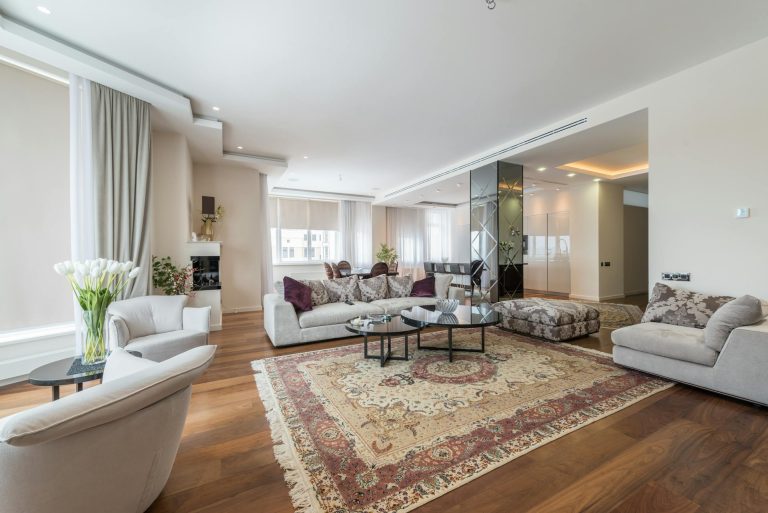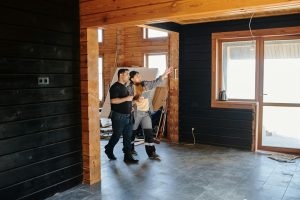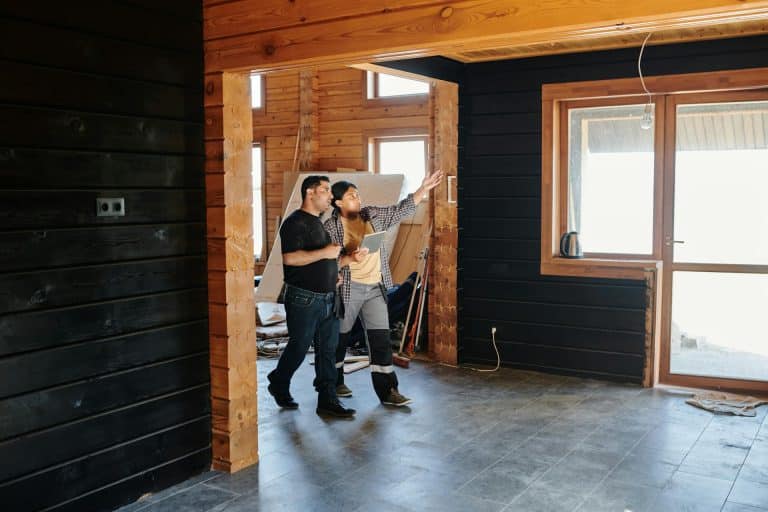Are you starting afresh with interior design for a newly built house? It can be exciting but also kind of intimidating, right? You’ve got a blank space and endless ideas. But turning that into something real takes more than just picking out paint colors.
Here’s a real-world, not-too-fancy walkthrough of the main steps for the interior design process for creating an amazing new interior design for a house from scratch.
9 Practical Interior Design Steps That Work
Let’s break it down. Here’s how to get from “Where do I start?” to “Wow, this looks good.”
1. Start With Space Planning
First, take a glance around the room. Really, have a look at it. Measure everything. Consider the room’s intended usage. Is it for leisure? Do you do some office work here? Having visitors?
This aids in determining what belongs where, how people can move through the room, and where furniture should go. It serves as the foundation for all subsequent judgments.
2. Set a Budget and Stick to it
This part’s not as fun, but it matters! Know how much you (or your client) want to spend. Then split that up, some for big furniture, some for decor, and some wiggle room for surprises (because they happen). Having a budget early on keeps things from getting out of hand later.
3. Visualize it First With Virtual Renovation
Sometimes it’s hard to picture how a room will look with a certain color or setup. That’s where virtual renovation comes in. You can see how different furniture layouts, wall colors, flooring, and ceiling styles might look before buying or painting anything. Virtual Renovation saves time, money, and second-guessing later.
4. Pick a Style That Makes Sense
Decide on a clear vibe! Is it sleek and modern? Minimal features? Warm and rustic? Whatever style you choose, once you pick it, every decision, from lighting to furniture, comes together effortlessly. Consistency matters more than perfection. So, stick with your chosen look for a space that always feels right.
5. Choose a Color Palette for the Room
Here comes one of the most crucial steps in the interior design process, which is choosing the color! Stick to a few shades. Pick one main color palette, then two or three supporting ones.
A neutral base with bold accents is always a safe bet. Or flip it and go bold on walls with softer-toned furniture. Either way, having a palette helps you avoid clashing or overdoing it.
6. Start Designing: Choose Your Key Furniture
Once you’ve settled on the essentials, focus on selecting your main pieces, like the sofa, bed, or dining table. These foundational items define your space. After these are in place, add smaller pieces to enhance the look and functionality.
Remember to consider the size of your room. An oversized sofa can overwhelm a small space. Keep scale and proportion at the forefront of your decisions.
7. Plan the Layout Around Real Life
This is the intersection of function and design. Consider how people move, sit, eat, and unwind. Avoid obstructing paths or windows. Avoid packing too much in. Instead of feeling forced, the layout should feel organic. Before choosing a version that works, try a few.
8. Make the Most of the Space
Do you have a small space? No problem. Use wall shelves, foldable tables, or sofa beds with storage underneath. Even in big homes, smart interior design steps can make everything feel more organized and easy to use. This step is about making the space work better, not just look nicer.
9. Add the Details That Pull it All Together
The exciting part is about to begin. Rugs, artwork, lights, plants, and cushions are what give the room its individuality. Even if they are minor, these final details tie everything together. Don’t neglect this. Without a few well-considered touches, even the nicest furniture arrangement can fall flat.
Interior design doesn’t need to feel complicated. By following these simple steps of interior design, you can turn any newly built house into a space that looks and feels great. Don’t try to do it all in one go! Just take it step by step, and let the space evolve as you go.













